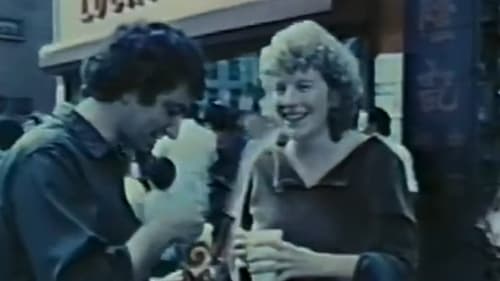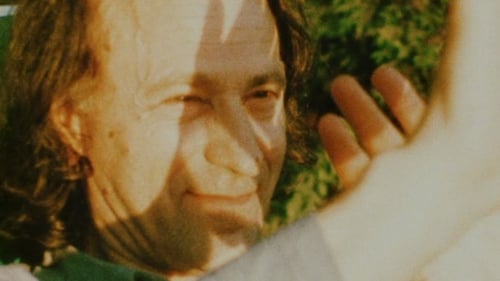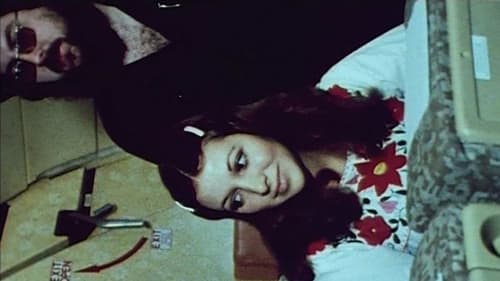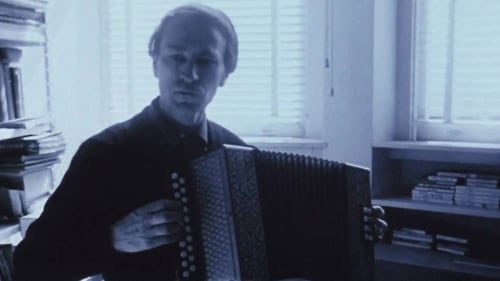
Self
노년의 요나스 메카스는 홈 비디오같은 사적 자료들을 통해 자신의 삶을 다시 돌아본다. 내밀하고 친밀한 분위기의 영상들은 때로 예상 외의 혼란과 낯선 기운을 포착하기도 한다. 스탠 브래키지, 알렌 긴스버그, 홀리스 프램튼, 백남준 등 동료 예술가들의 모습을 보는 것도 작은 재미를 준다.

Himself
BRAKHAGE explores the depth and breadth of the filmmaker’s genius, the exquisite splendor of his films, his magic personal charm, his aesthetic fellow travelers, and the influence his work has had on generations of other creators. While touching on significant moments in Brakhage’s biography, the film celebrates Brakhage’s visionary genius, and explores the extraordinary artistic possibilities of cinema, a medium mostly known only for its commercial applications in the form of narratives, cartoons, documentaries, and advertising. BRAKHAGE combines excerpts from Brakhage’s films and films of other avant-garde filmmakers (eg, George Kuchar, Jonas Mekas, Willie Varela, Bruce Elder, and others); interviews with Brakhage, his friends, family, colleagues, and critics; archival footage of Brakhage spanning the past thirty-five years; and location shooting in Boulder, Colorado and New York.

Self
Filmmaker Jonas Mekas films 160 underground film people over four decades.

Himself
This is a 1991 documentary film about the legendary artist and filmmaker, Joseph Cornell, who made those magnificent and strange collage boxes. He was also one of our great experimental filmmakers and once apparently made Salvador Dali extremely jealous at a screening of his masterpiece, Rose Hobart. In this film we get to hear people like Susan Sontag, Stan Brakhage, and Tony Curtis talk about their friendships with the artist. It turns out that Curtis was quite a collector and he seemed to have a very deep understanding of what Cornell was doing in his work.

Self
A film collage tracing the story of the lives, loves, and deaths within the artistic community surrounding Jonas Mekas.

Self
During the summer of 1966 Jonas Mekas spent two months in Cassis, as a guest of Jerome Hill. Mekas visited him briefly again in 1967, with P. Adams Sitney. The footage of this film comes from those two visits. Later, after Jerome died, Mekas visited his Cassis home in 1974. Footage of that visit constitutes the epilogue of the film. Other people appear in the film, all friends of Jerome.

Described (rather cheekily) by director Michael Snow as a musical comedy, this deft probing of sound/image relationships is one of his wittiest, most entertaining and philosophically stimulating films. In his words, the film “derives its form and the nature of its possible effects from its being built from the inside, as it were, with the actual units of such a film, i.e. the frame and the recorded syllable. Thus its ‘dramatic’ element derives not only from a representation of what may involve us generally in life but from considerations of the nature of recorded speech in relation to moving light-images of people.’”

Himself
This, the third of the Sexual Meditation Series, might also be seen as a triangular portrait of Julia and P. Adams Sitney and Jane Brakhage.

Self
“1950년부터 영상 일기를 찍었어요. 언제나 볼렉스 카메라를 들고 다니며, 내가 만나게 되는 상황이나 친구, 뉴욕의 모습, 계절의 변화 등 즉각적인 현실에 반응하고자 했죠. 어떤 날에는 열 프레임, 어떤 날에는 10초, 또 어떤 날에는 10분 정도 촬영을 했습니다. 물론, 아무것도 찍지 않은 날도 있었어요. 일기를 쓸 때는 ‘회상’이라는 절차가 수반되는데, 보통 책상에 앉아서 그날 하루를 되돌아보며 일기를 써 내려가기 때문이죠. 한편 영상(카메라) 일기의 경우, 어떤 순간에 대한 즉각적인 반응을 포착할 수 있습니다. 특정 대상을 카메라에 제대로 담던 담지 못하는 것과 관계없이, 순간의 반응 자체를 카메라가 기록합니다. 어떤 상황에 다시 돌아가 촬영을 재개한다면, 그것은 재연된 영상이 되어버리죠. 이는 사건이나 감정이 수반될 수밖에 없습니다. 일어나는 일을 있는 그대로 포착하려면, 내가 사용하고 있는 도구(여기에서의 도구는 볼렉스 카메라를 말한다)에 대한 온전한 이해가 필수적입니다. 내가 반응을 보이는 현실뿐만 아니라 내가 반응함과 동시에 내 감정의 상태(와 모든 기억)까지 포착할 수 있어야 하기 때문이죠. 다시 말해, 카메라를 들고 촬영이 이루어지는 바로 그 장소에서 영상의 구조화(편집) 작업까지 끝낼 수 있어야 합니다. 월든에서 여러분이 만나는 모든 영상은 카메라에 담겨있는 영상과 동일합니다. 1964년부터 1968년까지 촬영한 영상을 순차적으로 연결한 것입니다. 사운드트랙의 경우, 목소리, 지하철 소리, 길거리 소음 등 촬영 당시 수집한 사운드에 쇼팽의 음악-난 로맨틱한 사람입니다-과 때때로 의미 있고 또 때때로 의미 없는 사운드를 섞어 제작하였습니다.”







